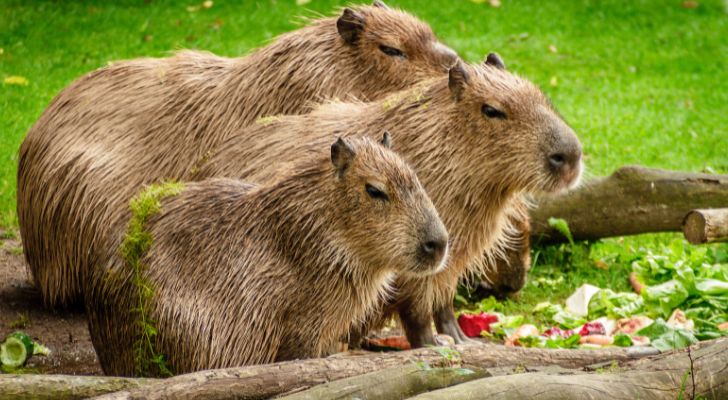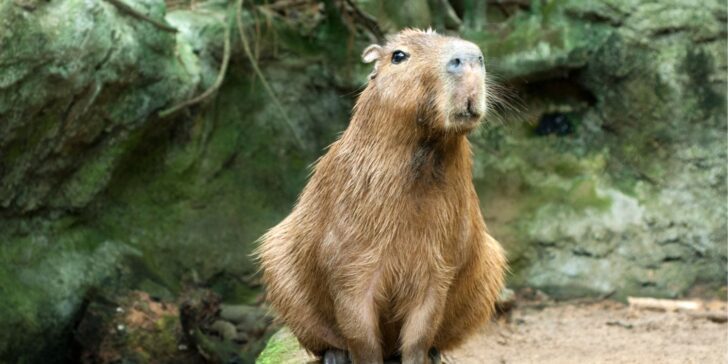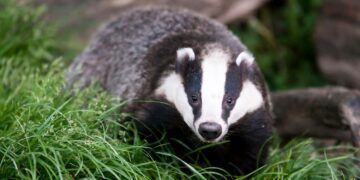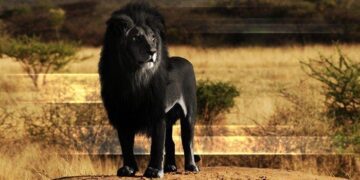Imagine a creature that embodies the essence of tranquility and charm, a true ambassador of the carefree life.
Enter the world of capybaras, where these remarkable rodents roam the lush landscapes of South America, spreading joy wherever they go.
From their interesting origins and social dynamics to their unique adaptations and quirky habits, capybaras are a treasure trove of intriguing facts that will pique your curiosity.
So, if you’re ready to embark on a journey of discovery, join us as we unveil 20 fascinating tidbits about these extraordinary creatures that will make you fall head over heels for capybaras!
They might not look like it, but they’re rodents. They’re not just any rodents, though – but the largest living ones!
There are two species of capybaras, the greater capybara, or Hydrochoerus hydrochaeris, and the lesser capybara, or Hydrochoerus isthmius.
It’s easy to tell the difference between greater and lesser capybaras, though. While they both look similar, lesser capybaras are much smaller, have entirely different breeding habits, and are nowhere near as social as their larger counterparts.
Capybaras belong to the Cavy family of rodents, a group of South American rodents that also includes the domestic guinea pig.
Believe it or not, there’s no collective noun for a group of capybaras! Some people have suggested a meditation of capybaras because they’re so chilled out.
They’re highly social creatures. While they usually live in groups of ten to twenty, this number has been known to rise as high as 100 or so.
Their name comes from the indigenous Tupi people of Brazil, who called it ka’apiûara, meaning “one who eats slender leaves.”
After requests from Venezuelan priests, in 1784, the Vatican declared that, due to their aquatic nature, capybaras could be classified as fish and could thus be eaten during Lent.
Greater capybaras can be found living wild across most countries in South America, including Brazil, Bolivia, Ecuador, Venezuela, Colombia, and Peru.
While greater capybara populations are healthy, their lesser cousins are threatened due to excessive hunting and loss of habitat.
Wild capybaras usually grow up to 4.4 feet (134 centimeters) long, and typically weigh up to 146 pounds (66 kilograms). The heaviest wild capybara ever recorded weighed 201 pounds (91 kg)!
Think of capybaras like the hippos of South America; they’re semiaquatic and love to play around in muddy puddles.
Also, like hippos, their eyes, nose, and ears are all on the top of their heads, so they can stay mostly submerged while keeping an eye on their surroundings.
Capybaras eat their poop in the morning. This gross-seeming habit is due to the fact that the grass they eat is hard to digest, and many of the nutrients only become available a second time around.
Capybaras can hold their breath for up to five minutes at a time!
They’re also strong swimmers, thanks to their webbed feet.
Capybaras became world-famous revolutionaries when they invaded an ultra-rich gated community in Buenos Aires, Argentina. They could almost be seen to be reclaiming their land, as the community they “invaded” was built on their native wetlands!
Capybaras have their own song, Capybara, by Russian band СтоЛичный Она-Нас (Capital She-Us). A warning, if you will – once you hear this song, it will live rent-free in your head forever.
It’s legal to own capybaras as pets in some US states, including Texas and Pennsylvania. Not that it’s a great idea, unless you happen to have your own private swampland!
Capybaras are so incredibly chill that other animals love to sit on them. Birds, monkeys, and even turtles have been known to hitch rides or lounge on the backs of these carefree creatures.

These laid-back South American rodents have shown us that life’s better when you take it easy and surround yourself with good company.
Whether it’s their social gatherings, their ability to embrace their aquatic nature, or their hilarious song, capybaras have proved to be the true kings and queens of carefree living.
So, let’s take a cue from these furry role models and remember to live life at our own pace, just like the capybaras do!


















